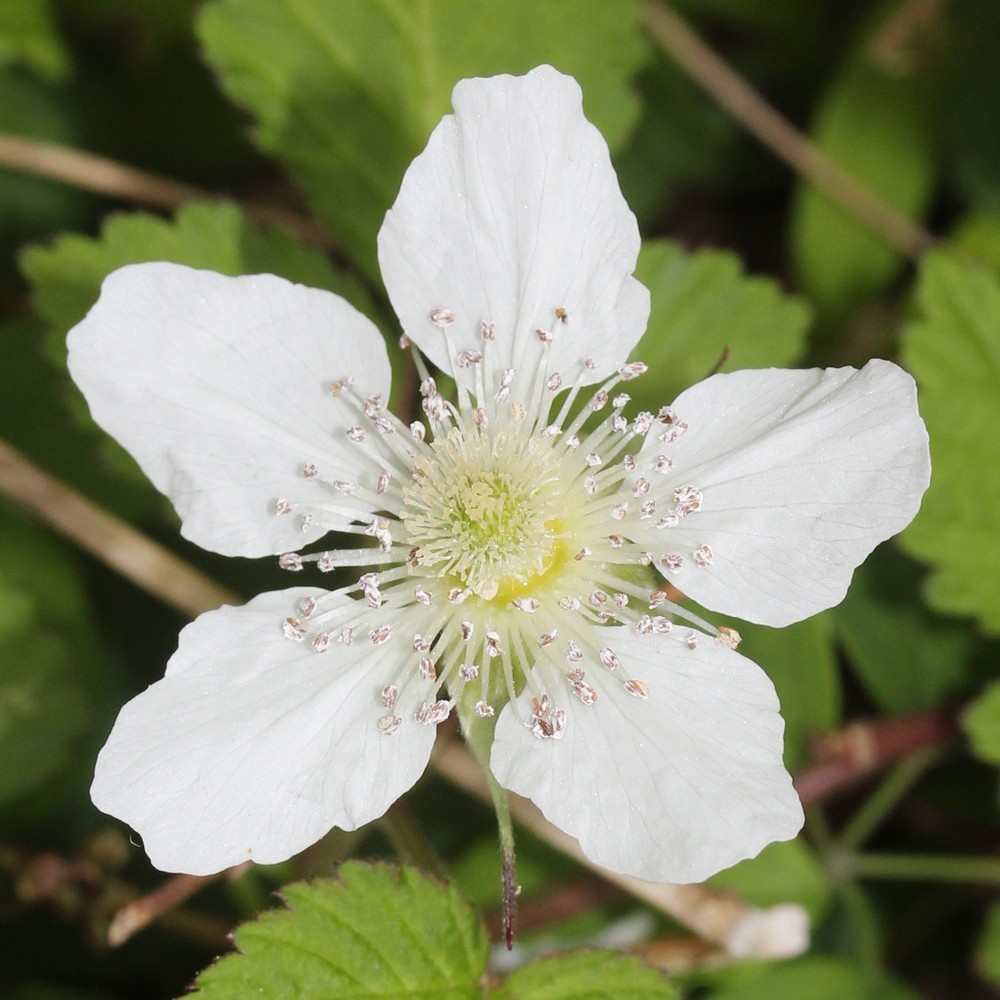Woolly bramble
(Rubus pannosus)

Description
Rubus pannosus, commonly known as woolly bramble or woolly-fruited raspberry, is a species of flowering plant in the Rosaceae family. This perennial shrub is native to the mountainous regions of Europe, including the Alps, Pyrenees, and Carpathians. With its unique characteristics and attractive qualities, Rubus pannosus has gained popularity among gardeners and plant enthusiasts. In this comprehensive guide, we will explore the various aspects of this fascinating plant, from its taxonomy and morphology to its cultivation and uses. Taxonomy and Classification Rubus pannosus belongs to the genus Rubus, which comprises numerous species of flowering plants commonly known as brambles or raspberries. The genus Rubus is part of the Rosaceae family, which also includes well-known plants such as roses, strawberries, and apples. Within the Rubus genus, Rubus pannosus is classified under the subgenus Idaeobatus, which includes raspberries with glandular fruit. Physical Appearance Woolly bramble is a deciduous shrub that typically reaches a height of 1 to 2 meters (3 to 6 feet). The plant produces erect or arching stems that are covered in fine, soft hairs, giving them a woolly appearance. The stems are armed with thorns, which vary in size and density depending on the individual plant. The leaves of Rubus pannosus are compound, consisting of three to five leaflets. Each leaflet is ovate to elliptic in shape, with a serrated margin and a dark green color. One of the distinguishing features of this species is its fruits. The woolly-fruited raspberry produces clusters of small, round to oval-shaped berries. The fruits are covered in a dense layer of fine hairs, giving them a velvety texture. When ripe, the berries range in color from orange-red to deep red, and they are edible, though they tend to be smaller and less sweet than those of other raspberry species. Distribution and Habitat Rubus pannosus is native to the mountainous regions of Europe, where it thrives in alpine meadows, rocky slopes, and woodland edges. It can be found in countries such as France, Switzerland, Austria, Italy, and Romania. This plant is well-adapted to cool climates and can withstand low temperatures and frost. It prefers moist, well-drained soils and is often found at elevations ranging from 1,000 to 2,500 meters (3,300 to 8,200 feet) above sea level. Cultivation and Propagation For gardeners interested in growing Rubus pannosus, several considerations should be taken into account. The plant generally prefers a cool climate and is not well-suited to regions with hot summers. It thrives in full sun to partial shade and requires well-drained soil with moderate fertility. Adequate moisture is crucial, but the soil should not be waterlogged. Propagation of Rubus pannosus can be achieved through various methods. One common approach is by collecting and sowing the seeds in a suitable growing medium. The seeds should be stratified before sowing to mimic natural winter conditions and encourage germination. Another method is by taking stem cuttings during the dormant season and rooting them in a well-draining medium. Additionally, Rubus pannosus can spread naturally through its underground rhizomes, forming new shoots and establishing colonies. Uses and Benefits While Rubus pannosus is not as widely cultivated for its fruits as some other raspberry species, its berries are still edible and can be consumed fresh or used in various culinary applications. Although the fruits may be smaller and less sweet than those of cultivated raspberries, they possess a unique flavor that some people find appealing. They can be eaten as a snack, added to salads, used in jams, jellies, and sauces, or even incorporated into baked goods. Aside from its culinary uses, Rubus pannosus has other benefits and applications. The plant has a long history of traditional medicinal uses, particularly in European herbal medicine. It has been used to alleviate various ailments, including diarrhea, sore throat, and inflammation. The leaves and stems contain tannins and other compounds with potential antioxidant and anti-inflammatory properties. Furthermore, Rubus pannosus is an excellent addition to garden landscapes. Its attractive woolly stems, thorny branches, and velvety fruits can provide visual interest and texture to gardens and natural areas. It can be grown as a standalone ornamental shrub or used in mixed borders and hedgerows. The dense growth habit of the plant also makes it suitable for providing habitat and shelter for wildlife. Cultivating Rubus pannosus Responsibly When cultivating Rubus pannosus, it is important to consider its potential invasiveness in certain regions. While it is not considered invasive in most areas, it has the potential to spread rapidly through its rhizomatous roots and can become problematic in some ecosystems. Therefore, it is recommended to monitor its growth and prevent its spread into sensitive natural areas. To control the spread of Rubus pannosus, it is advisable to regularly remove any suckers or new shoots that emerge outside the desired growing area. Additionally, applying mulch around the base of the plant can help suppress the growth of unwanted shoots and minimize the chances of them taking root. Careful consideration should also be given to the plant's placement in the garden to prevent it from overtaking other desirable plant species. Conclusion Rubus pannosus, or woolly bramble, is an intriguing plant species that offers both aesthetic appeal and modest culinary uses. Its woolly stems, thorny branches, and velvety fruits make it a unique addition to garden landscapes. With proper care and cultivation, it can thrive in cool climates, adding beauty to gardens and providing a source of interest for plant enthusiasts. While not as widely cultivated for its fruits as other raspberry species, Rubus pannosus still offers the opportunity to experience its distinct flavor in culinary creations. Furthermore, it has a history of traditional medicinal uses and contains compounds that may have potential health benefits. As with any plant, responsible cultivation practices are essential to prevent its potential invasiveness and protect native ecosystems. By monitoring its growth and taking appropriate measures, gardeners can enjoy the beauty and benefits of Rubus pannosus while preserving the ecological balance of their surroundings.
Taxonomic tree:







